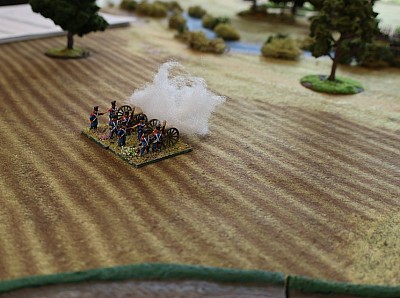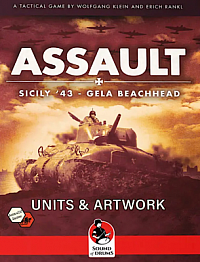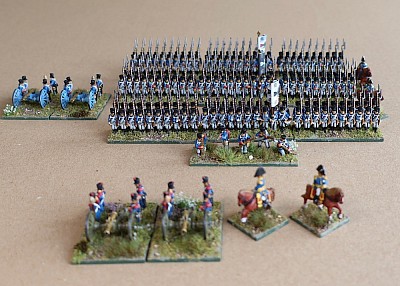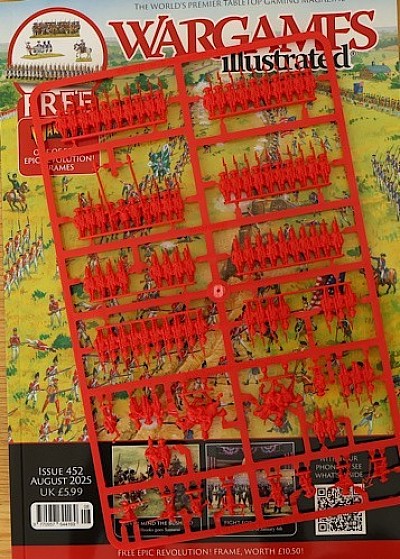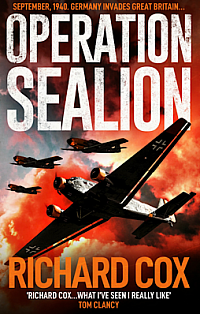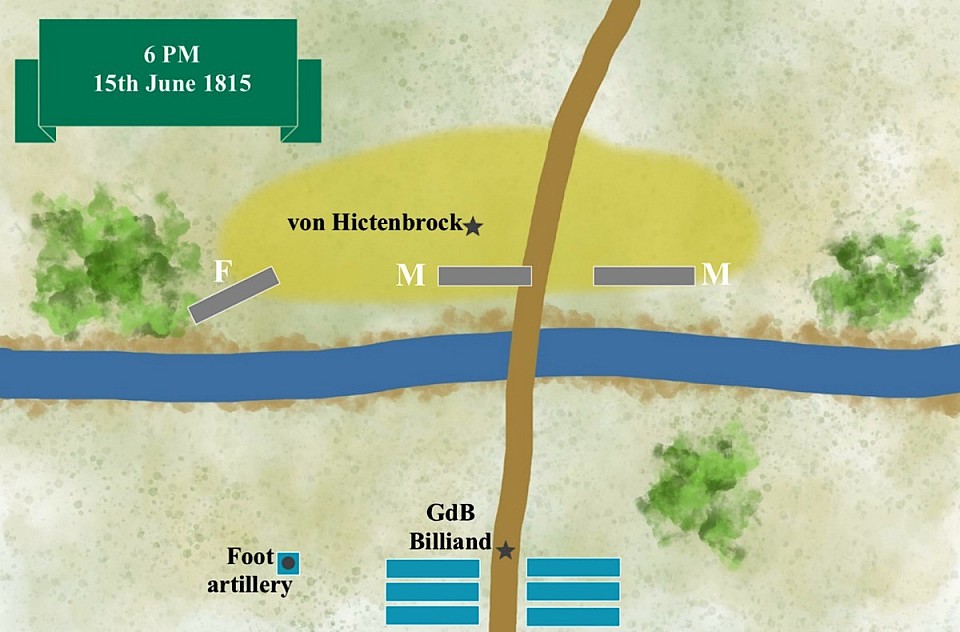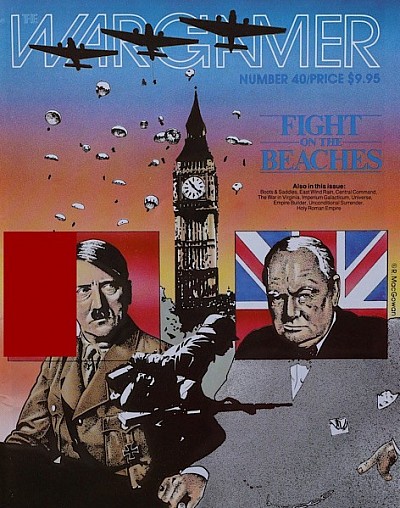Dear Diary - a rolling 4 months of comment
Mid game
I am part way through the 'Near Gilly' scenario. Six battalions of French infantry plus their guns are assaulting the recently painted Prussians, who are located behind a stream.
I am just doing a couple of turns a day as the bad back recovers, so hopefully by tomorrow the game will have concluded and I should be able to have a write-up with some photos. So far it has been an enjoyable outing and we also have the christening of the new game mat, which is working well with its river feature.
I am using my own rules and play so far has already thrown up one thing that needed covering, so that is good.
On the painting sticks I have some Landwehr lancers and I am trying some contrast paint to see if it helps me pick up some speed. So far it seems okay, but I think I will be mixing the process with some standard acrylics.
A face-to-face outing
I met up for a chat with Mike last night and we pushed some counters around for a learning infantry scenario from the Assault Sicily 43 game (by Sound of Drums).
There is something very compelling about the game, which covers tactical WWII combat and the campaign is beautifully done, but it also has some detractions for me and these days I am preferring to stick with a single series of games per era, so my tactical WWII game of choice remains with the Old School Tactical series from Flying Pig.
Firstly multi coloured dice are used for combat with both sides rolling and the defender trying to defeat the attack my matching dice symbols (critical hits, hits and supressions). Situations will modify the dice. For example if your section is in rocky terrain, you get a basic yellow dice for the defending section, plus a yellow and green dice for the terrain. The attackers dice combination will depend upon the firing range, so you are checking dice colour combinations throughout.
It just feels over convoluted compared to the more tradition type of game that rolls 2D6 with its bell curve effect, involving (say) a stone building getting a +2 for defence etc, the latter is just more intuitive and easier for me to handle, especially if playing solo and especially late at night when tired.
Also, there is a system of hits (attacker) and lives (defender). This makes sense when fighting against infantry, as accumulated hits can reflect individuals in a section becoming casualties and the section gradually losing cohesion, but in vehicular combat, the system means that you don’t often get a straight knock-out, which to me, seems like losing an essential element of a tactical warfare game. A Sherman (say) has four lives (shown as hearts), a good shot might knock out 3 of those lives, so it is now on its last life …. What exactly does that represent. I would much rather see a miss, a hit with track damage or a hit with a knock-out etc.
I do like that position and manoeuvre are given an importance, which comes in part from good map design and so you are continually thinking about how to unhinge the enemy defence, rather than just going for a head on engagement or shoot out and hoping for the best.
How does this fit in with our future sessions? I’m not sure really, we would probably limit ourselves to the smaller scenarios, but then would we play enough for things to become a bit more second nature? Regardless, it was nice to get some dice rolling.
July's painting project
Well it was certainly pushing it, but last night I hit the painting goal for July with three battalions of Prussians done. The last bit of flocking went on just before midnight! In fact I did a little more than the July plan had proposed.
This leaves me all set to do the ‘Near to Gilly’ scenario that I recently discussed.
Also rather than going with the bare minimum two bases per battalion, I have managed three bases, which is where I want all of the napoleonic battalions to be once enough bases have been painted.
So, painted and based in July, we have;
Two battalions of Prussian Musketeers (white webbing)
One battalion of Prussian Fusiliers (black webbing)
One company (1 base) of Prussian Jäger
One Prussian gun battery (2 models)
Two mounted Prussian Commanders
I also managed to get a few items done for the French which are shown (blurred!) at the front in the photo;
One French Gun battery (2 models)
Two mounted Colonel’s
I got a little fed up doing these by week three, but a push towards the end of two painting sessions a day saw me get over the line and now seeing them as a group, I am quite pleased with the work that went into them.
They now form the start of a Prussian ‘Pocket Army’, but I will quickly expand it with a couple of battalions of Landwehr, a regiment of Lancers and a company or two of extra jägers. That should at least give me a force that can cover all of the scenarios in the Neil Thomas book - One Hour Wargames, though I will also have to do some French cavalry for that to happen.
Anyway, there we are, I hope to get them to the table soon.
Free Epic sprue
The latest Wargames Illustrated magazine (issue 452 for August 2025) hits UK stores today (Sainsbury's now carry it) and it carries a free Epic Sprue for their new Epic release ... Revolution (AWI).
In fact, according to the WI latest video, there are a variety of four different sprues on offer, the one I picked up (there was no choice, all the mags carried the same sprue) is a frame for 'British Army 2'. This is the one that carries the Hessians and Allies.
The artwork on the front of the mag is taken from the box cover of the Revolution battle box.
There is a 4 page article that gives details of what are on the selection of four frames and this is really useful as it is something that Warlord Games don't generally give enough coverage to in their game boxes.
The 'Never Mind The ......' rules series by Andy Callan gets a Never Mind the Bushido article and for Italian Wars 1494 - 1559 fans there is a look at the new Warlord Games Pike and Shotte supplement 'Death and The Landsknecht'.
Plus all the usual pretty pictures including a close look at Bill Gaskin's Seven Years War game at Partizan 2025.
I have just noticed the advert on the back which is for the new Wars of the Roses supplement for Swordpoint rules by Gripping Beast - nice!
Fight on the Beaches!
I recently picked up a wargame magazine that carried an Operation Sealion boardgame covering the planned Nazi invasion of Britain in 1940.
The game is called Fight on the Beaches and was described in a post here on 24th July. It is a hex and counter game. Anyway, I fancy playing the game and perhaps writing it up on a day by day basis in a sort of ongoing narrative style for the blog.
I thought a bit of background reading would help and came across this title. It is a novel rather than an academic study ..... but it turns out the narrative is based on the wargame run organised by the Royal Military Academy at Sandhurst with six senior officers per side umpiring various aspects of the game - how good is that!
I seem to recall the late Paddy Griffiths being involved in this or something like it, so a story based on a wargame sounds right up my street and at just a couple of quid on the Kindle, it is a snip.
Most books on the subject focus on the logistics and planning of the operation that never happened, but this book goes beyond that and explores the landing and subsequent campaign, taking an hour by hour account as a 'what if' campaign for the conquest of South East England and London, with the wargame directed by people who actually have the military knowledge and experience to keep the action within the limits of what was possible / likely.
As something quite different, I have high hopes for this.
(Above) Rearguard - 15th June 1815
Earlier this month, I set a goal for July …. to have painted a Regiment (3 Battalions) of Epic Prussians, so that I could do a battle with the recently obtained commission painted French Infantry.
I think I am close ….. very close, tight enough that the painted figures might just be glued to bases but the basing paste and flocks etc not yet done. So it is time to think about a scenario.
Ideally, I need something that allows for the low unit density of just three battalions. A bit of research pointed to the initital advance of the French army during the Waterloo campaign, when Prussian outposts were first being contacted by Napoleon's forces.
So .......
As Napoleon’s French troops crossed the Belgian border, a series of small skirmish actions erupted as small Prussian outposts were pushed back in by the advancing French. The weight of the advance and the seniority of the officers made it clear that this was the main part of the French army and the Prussians decided that the advanced elements of Zeiten’s I Corps should fall back and concentrate at Gilly.
Not far from Gilly, 28th Infantry Regiment was positioned on a rise behind a stream on rearguard duty. They would soon be overwhelmed by the French, it was their task to delay the French, but also to retire as a rearguard and maintain cohesion of the regiment.
The letters 'F' and 'M' on the above map refer to the Prussian Fusilier and Musketeer battalions.
In addition to painting the Prussian infantry, this scenario needs me to also paint up a commander for each side and a pair of guns for the French ….. I am gearing up to more than one painting session a day to try and complete all of this. Frankly it’s a bit daft busting a gut to get this done, when time doesn’t really matter that much, but setting a goal does concentrate the mind and it gets the job done!
Hopefully, this will be August’s first figure game, certainly not a demanding situation and it will be the crafting of the victory conditions that will deliver any game tension. At the moment I am thinking of a sliding scale of Victory Points set against turn numbers as to when Billiand can claim to control the high ground, together with VP’s also generated for casualties and the exit of Prussian units. The Prussians will need to decide at what point to abandon the position and retire ..... if they are lucky enough to get that choice!
An Operation Sealion game
As per previous post, Fight on the Beaches arrived yesterday. Note I have edited the front cover to remove a swastika symbol so that the post can be viewed without breaching the legislation of any part of the world.
The game was printed in 1985 by 3W as an insert to the Wargamer issue 40 magazine and it essentially covers Operation Sealion, the German Invasion of Great Britain in WWII.
It looks to be very playable with just four pages of rules, though they use quite dense text and no illustrations, so if done today, I would imagine that they would be an eight page set.
Receiving a 40 year old game through the post is a reminder of times gone by. The cover price was $10 and today it cost me £10. Other games out at the time and either discussed or advertised in the magazine are Boots and Saddles by GDW, Advanced East Wind Rain rules, A Holy Roman Empire replay, Killer Angels and South Mountain by West End Games.
This arrived as an unpunched game in good condition, but the staples are rusty and there is a mild ‘old mildewy magazine’ type smell that I know will annoy me, so I have kept the map which will be under plexi, cut and clipped the counters (small font so may be harder to read for some) and then the magazine cover, rules and historical support notes have been removed, scanned and printed onto new paper (thank you ink printer that uses big tanks!). Everything but map and counters have been discarded, I will just rely on the scanned and printed documents.
There are random victory objectives. The Germans select a chit from a pool of 5 chits. The number on the chit will determine what the scenario victory conditions are. These range from a 4 turn game, to a 22 turn game and objectives vary from occupation of rural centres to isolation of them by cutting rail lines.
I am hoping that this is a fairly easy way into this ‘what if’ campaign. The subject fascinates me and I can see it making for some good play in its own right or using it as a campaign driver to get some figure games up onto the table. It might make the blog as a turn by turn replay ….. or it could just end up in the bin! I have high hopes, but know nothing of the system, so time will tell.
The map (not a particularly pretty thing) is showing south east England, with the lower half of London presented on the top section of the map. The Germans do their land and then the British are allowed to move their units from their pre game set-up positions to reflect the German poor intel regarding accurate British troop deployment. Hopefully this will be an early one to the table.
Also in the order came another magazine, this one printed in 1994 and oddly that has rusted staples, but no smell. It has a glossier, higher quality paper that we are used to seeing in later magazines and that could be the reason.
A game has been set up!
I have been working on an article for a publication, the research is done and the idea is fully formed, the introduction and scene setting has been written, it just needs to be played through to make sure it all works and of course to get some photographs.
And so to the table it goes ..... but to help with the leaning forwards etc, I have gone for a 2´x 4´ format, making for easier management. The format just so happens to fit very nicely with the linear nature of the incident.
It was enough to set it all up, so I left it and then returned to it later in the day and just played the first turn - a hugely enjoyable thing to do. The action is planned as a 7 turn game, so I envisage doing just one or two turns a day to cycle through it. Regardless, it is just very nice to roll some dice.
I would like to say more and even share a photo or two, but in fairness to the journal I am obliged to remain vague.
I was browsing the web site of Second Chance Games yesterday. They have a page that deals with price reductions or some such and I was taken by two old games that would never have crossed my radar (again!) had it not been for browsing through their lists.
Anyway, they are ordered, so fingers crossed they arrive at some point today and I will give each one a quick mention here. One is a 1985 game, the other 1996. I know that I have owned both previously but I can't remember a thing about them, but it was a time when I was a fairly prolific buyer and then selling to fund the next purchase, so amongst all of that churn, I doubt many of the games that I came across actually got their deserved attention ....... or perhaps these two games did get attention and I moved them on for a reason! Oh Dear! We shall see.
